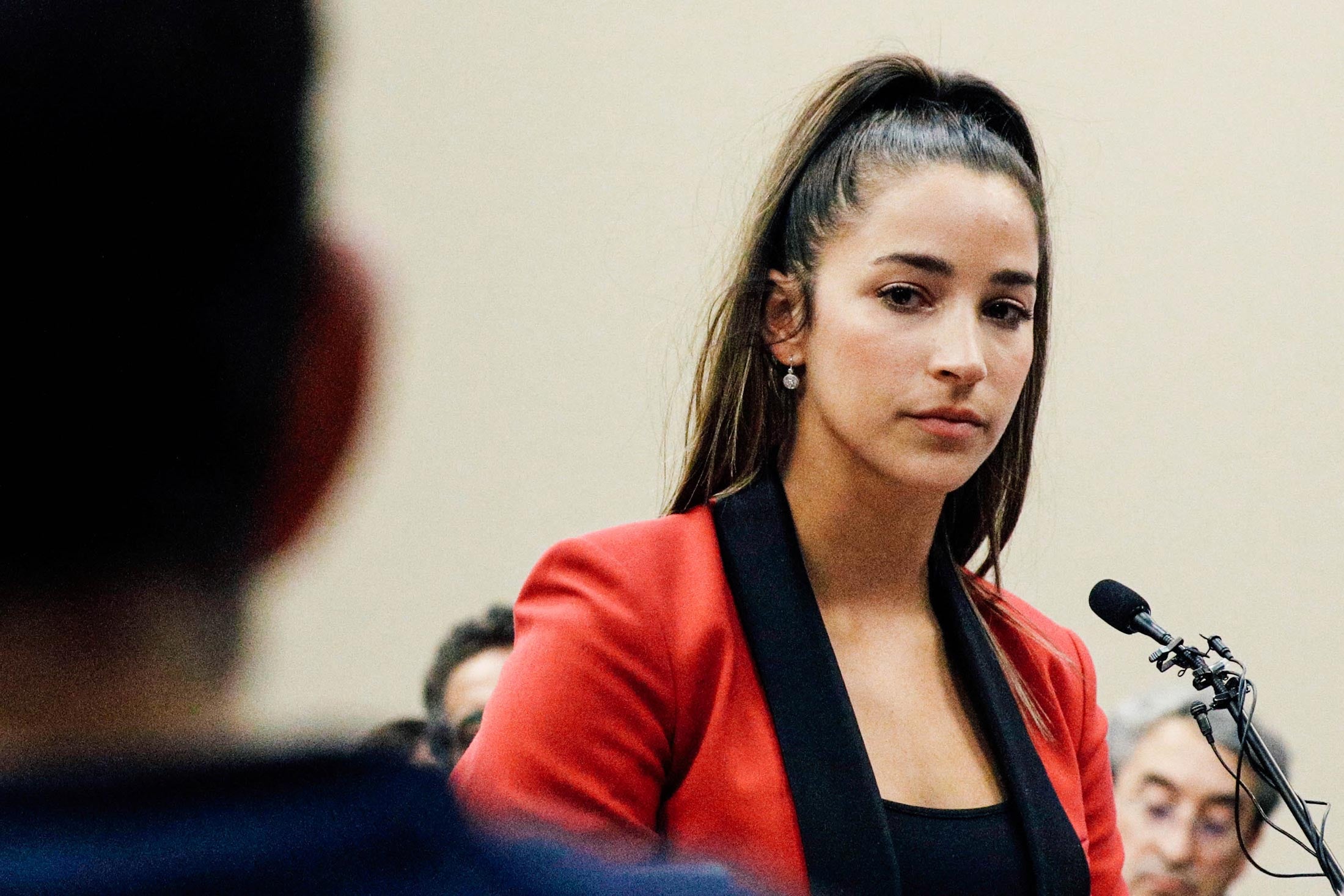The victims of serial abuser Larry Nassar, a trainer and team doctor for gymnasts at the club, collegiate, and elite levels, are confronting him this week in a Michigan courtroom. Scores of women have stepped forward to deliver impact statements, accounts of how his predations upended their lives. Fierce and defiant, they are voicing their horror that Michigan State University and USA Gymnastics enabled Nassar’s crimes—he’d molest young athletes under the guise of treating their injuries—for decades. One woman described how her father killed himself because he couldn’t live with his failure to protect her from Nassar. Another said she rarely sleeps through the night while others spoke powerfully about the depression and anxiety that resulted from the physician’s repeated assaults. In the #MeToo moment, the words of these women should be splashed across every front page and media feed. Our outrage, though, is only now gathering steam. Why did it take so long for us to hear what Nassar’s victims have been telling us?
We’ve known about Nassar for more than a year. Word of his conduct first seeped out in August 2016, when Rachael Denhollander—inspired by a piece in the Indianapolis Star about USA Gymnastics’ shoddy handling of sexual abuse cases—filed a criminal complaint against her former doctor. The Star picked up the story, and other women slowly began to emerge with similar tales. As Dvora Meyers writes in Deadspin, more than 100 victims came forward between September 2016 and September 2017. Some said they’d reported his behavior to Michigan State employees as early as 1997, but the university had brushed them aside.
Nassar’s crimes are extraordinarily heinous. He has pleaded guilty to three child pornography charges, for which he will serve 60 years in federal prison. He victimized an enormous number of girls and young women. He targeted children. He was enabled and abetted by organizations—Michigan State, USA Gymnastics, the Twistars gym in Michigan—that are explicitly tasked with educating and protecting young people. And yet Harvey Weinstein and many, many others have drawn more coverage than Larry Nassar.
Why did the spirit of #MeToo pass this scandal by, and why is it finally present now? The gymnastics version of the Reckoning first unfolded in a local paper, rather than the New York Times or the New Yorker, which may have limited its scope. And when Denhollander took what she described as a “shot in the dark” and contacted the Star, the presidential election was looming and police had gunned down a Milwaukee man, sparking violent protests. Maybe her account just got lost in a busy news cycle.
Of course, that’s an unsatisfying explanation: Weinstein dominated the front pages at a time when we were fascinated by the Russia probe. It feels more likely that Denhollander and Nassar’s other initial indictors lacked the celebrity clout of Rose McGowan, Ashley Judd, and Angelina Jolie. By the time famous Olympians began to detail the abuse they’d suffered at Nassar’s hands—McKayla Maroney spoke out in October, and she was followed by Aly Raisman, Gabby Douglas, and Simone Biles among many others—we may have been too preoccupied by the endless sexual assault revelations from the entertainment industry to notice, or too exhausted to care.
Another awful possibility arises—that nothing about a sea of young female gymnasts enduring abuse from an older man strikes us as all that surprising. As Rebecca Schuman explained, elite tumblers feel compelled to surrender their bodily autonomy to the coaches who handle them and to the viewers who objectify them. The public relates to these athletes in fickle and transactional ways, changing our tune based on what such glittering toys can offer us in the moment. One depressing lesson from the Nassar reckoning might be that nobody cares about gymnasts unless there’s an Olympics happening.
This week’s urgent and heartbreaking testimonials have changed our coverage calculus. Famous women are standing up to denounce the man who abused them and the people who didn’t do enough to stop it. They’re doing so in great numbers, in front of a camera, and with members of the media hanging on their every word. “Larry,” Raisman said in her victim impact statement Friday, “you do realize now that we—this group of women you so heartlessly abused over such a long period of time—are now a force, and you are nothing. The tables have turned, Larry. We are here, we have our voices and we are not going anywhere.”
It was a powerful moment, one that felt, possibly, like the turning point this scandal so desperately needs. Beyond the inspiring optics of victims speaking out, the airing of wrongs brings accountability, which breeds change—or can, at least, if those wrongs fall on receptive ears. Raisman’s statement illuminated the converse: how a lack of scrutiny and the absence of public pressure allowed leaders to get away with doing little or nothing for far too long.
We should continue to ask why it took until this week for these gymnasts’ accounts to command our notice, and we should see the value in listening to women whether or not their words fit a particular rubric. Paying attention isn’t just about respectfully validating someone’s suffering. It means reforming the institutions that care more about money and reputation than about the human beings that win them those things in the first place. It means shaping the conditions under which the flame can catch and the movement can begin.
